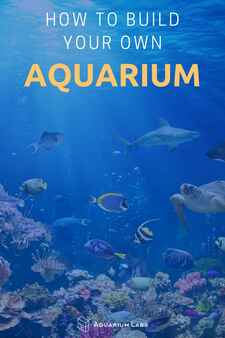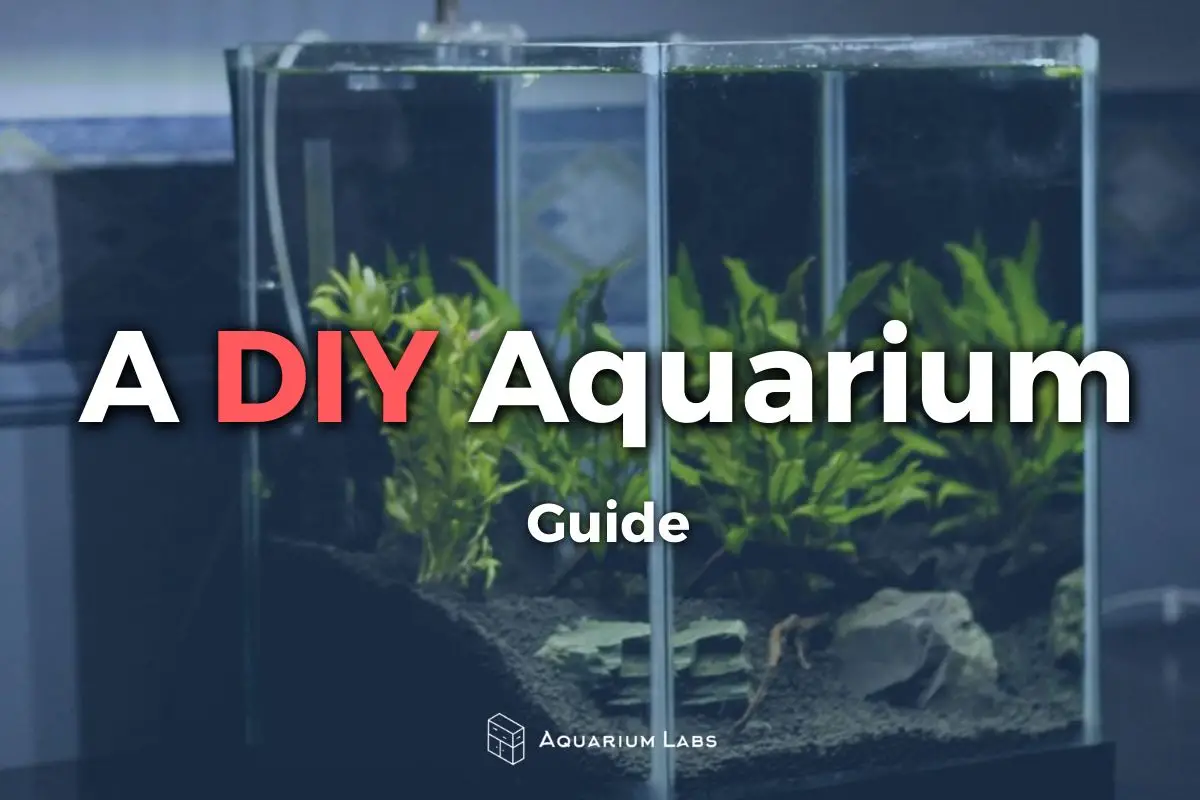Keeping fresh or saltwater fish—or both—can be rewarding in more ways than one, but building your own DIY aquarium adds a personalized touch that you can’t get otherwise. Your aquarium should be uniquely you, and what better way to achieve that than to build your own tank?
If you’re new to owning aquatic animals, there’s a lot to know about getting a tank up and running. We’ll show you an easy, cost-effective, and creative way to build the aquarium of your dreams.
Planning Your Aquarium
First, you must consider how large you’d like your aquarium, and that depends on what animals you wish to house there. The general rule of thumb for fish tanks is, bigger is better, as there aren’t too many downsides to a big tank.
However, a too-small aquarium can be devastating to your animals. Here are the minimum requirements we recommend for your Do It Yourself aquarium:
Freshwater Fish Aquariums
Even for the easiest-to-care-for freshwater fish, we recommend at least a 10-gallon aquarium. The perfect fish for new hobbyists, for example, are typically danios, guppies, tetras, cory cats, and goldfish, all of which thrive in 10-gallon fish tanks.
You could squeak a beta fish into a smaller tank, but betas aren’t social fish and should remain alone. If you want an active aquarium, we recommend a 10-gallon aquarium as the smallest size for your DYI build, with dimensions of 22” x 12” x 13.5.”
Saltwater Fish Aquariums
Saltwater fish require more room than the typical freshwater fish, even for the most common and hardy species like dottybacks, gobies, tangs, and wrasse. Little Nemo might not mind a 20-gallon tank, but since clownfish like company, a 30-gallon would still be best. We recommend a 55-gallon tank or bigger for your aquarium.
Reef Aquariums
While similar to standard saltwater fish tanks, reef aquariums need even more room for their corals and anemones to grow and spread, as well as more volume to balance out the water chemistry.
Reef aquariums often include fish from saltwater tanks, scavengers like crabs and snails, and invertebrates like shrimp and sea urchins. The perfect size for a beginner’s reef aquarium is 120 gallons.
If you’re interested in smaller reef tanks, check out our Nano Reef Buyer’s Guide.
Aquariums for Small Lizards, Snakes, and Turtles
While larger reptile species may be better suited for different types of cages, aquariums can make very nice homes for smaller varieties. Small turtles can do well in 20 – 30-gallon tanks, but when as soon as their shells grow larger than three inches, they’ll need more space.
Snakes similar in size to ball pythons and kingsnakes can do well in 20-gallon tanks, and smaller varieties of boa constrictors and blood pythons can live temporarily in your DIY aquariums. Still, once snakes reach five feet or longer, they should be housed in reptile cages customized to their species.
Finally, small lizards like green anoles and geckos are well-suited for aquarium living. Owners just need to make sure they have a screened lid that fits securely around the top edges so no animals can escape. Basking lamps placed directly on top of these screens help prevent escapes.
Deciding On Your Materials
When it comes to buying the materials for your DIY aquarium, we highly recommend tempered glass over acrylic. While there are advantages to acrylic, building your aquarium with glass ensures your efforts pay off in the end—and for a long time to come.
Acrylic is lighter and stronger than glass, and you can customize it into nearly any shape you wish. That might sound great, but let’s explore what this means for you. If you want to build a huge tank, yes, weight matters. Not only is glass heavy, but a 100-gallon tank filled with water, fish, and rocks can easily weigh over 400 lbs. Acrylic would be half as heavy. But, are you planning to build an exceptionally large tank?
Probably not.
And if not, the benefits of buying acrylic end there. Acrylic is expensive, scratches easily, and turns yellow with age. If you think of all the rocks, sand, and underwater decorations bound to be inside your amazing DIY aquarium, you’ll agree that building a custom aquarium out of acrylic sounds unappealing. There are simply too many opportunities to scratch the surface.
Preparing Your DIY Aquarium Plan

Now, you’re ready to design and build your aquarium. We recommend creating exact schematics for your aquarium or getting a professional to help with the measurements. Remember, you’ll construct your aquarium to hold water, so precise measurements mean no leaks.
Leave the top of your aquarium open to allow for a lighted hood. You need glass for the bottom, front, back, and two sides of your aquarium. Additionally, you need:
- Single-edged razor blades
- Acetone
- Non-toxic, 100% silicone sealant, such as All-Glass Brand 100 Percent Silicone Sealant
- Paper towels
- Washable felt-tip marker
- Duct tape or painter’s tape
- Sandpaper
Putting Your Plan in Action
Once you’ve cut the glass for your DIY aquarium, make sure to take sandpaper to the edges and buff them for any raw, sharp edges. Then, clean the outside edges of the glass with a small amount of acetone on a paper towel. Cleaning ensures that the silicone sticks to the glass properly.
Next, you will line the near-edge of your glass with tape. Watch this video to see exactly how it’s done.
If the tape comes away from the glass during building, dab a drop of acetone onto another paper towel and wipe the area clean. Then, add a new piece of tape.
As you will see in the video above, once you have all of your materials prepared, lay out the glass panels in the exact placement in which you will be building them. Make a note of which edges go where using a felt-tipped marker. A combination of arrows and directions works well (up, down, outside, inside). Marking the orientation of the panels ensures you don’t make a mistake or get frustrated.
Tips for Installation
You will use the same technique to install each glass panel in your aquarium. After you watch the video, but before you begin, read these tips to keep the job as flawless as possible:
- While installing your glass panels, particularly the first, front panel, it is helpful to have someone nearby for assistance.
- Have five-to-six pre-cut strips of duct tape within easy reach. Use these to secure the freshly installed panels to one another and avoid any problems with tilting glass.
- When you apply the silicone to each inside edge of all the panels you will be joining, make sure the line is solid and do not wipe off any excess. You can always clean up any silicone that has seeped through the edges after the silicone has cured.
- When installing a glass panel, align the panel with the silicone and then, at a slightly forward angle, push it into the silicone before tilting the panel upright and pressing it firmly into the bottom panel. This technique will help ensure a tight fit.
- After fitting the panels together, go back and fill each of the eight joints where the panels come together. Then, run your thumb over the silicon in each seam, ensuring a secure seam.
- Let your new DIY aquarium cure for a full 12 hours. Then, fill the tank with water to check for leaks. Leave it for another 12 to 24 hours to guarantee a job well done.
While you can also craft your own tank caves, DIY aquarium backgrounds, and more—that’s an entirely new topic—so for now, we leave you with the newfound knowledge you need to know to build your first aquarium. Enjoy!
Further Reading:
- The Ultimate Aquarium Lighting Guide
- The Best Aquarium Chillers and Aquarium Heaters
- The Best Canister Filters

